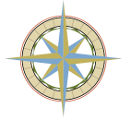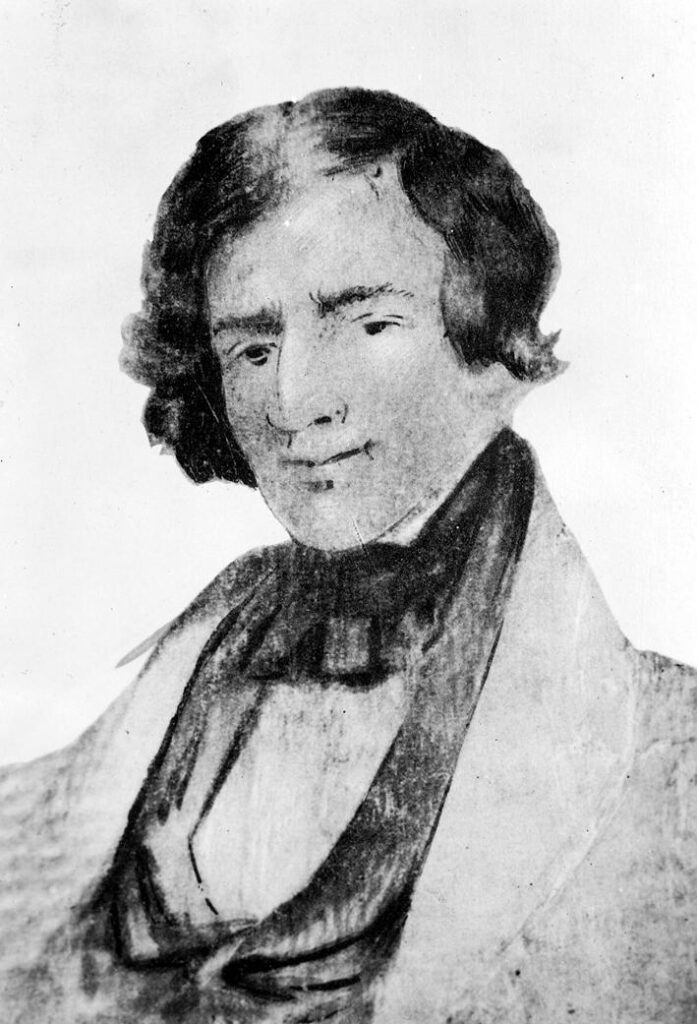In my early days of residency here, I was blessed to have met and known some of Port Orford’s old timers. I heard many stories of Port Orford’s past. I can’t tell you how many times I heard the Battle of Battle Rock story while sitting on a bar stool in one of the local pubs. I was left with the impression that Tichenor and his lot were the first Whites to set foot in this Paradise. A few said that Hudson Bay Company may have arrived and traded with the local Quatomah. Another story speculated that red haired“Chief Red Shirt”, who died on the beach during the Battle Rock conflict, was actually a Russian sailor. And of course, there was George Vancouver who dropped anchor off Cape Blanco in 1792. These were the only mention, that I recall, of Whites in the vicinity before 1851.
One story I did not hear was that of Jedediah Smith possibly camping on the flat above Battle Rock Beach in 1828. Smith, with 17 men and 300 horses and mules, traveled up Central California, arriving at Red Bluff in April. He then turned west, crossing over to the Pacific Coast. Along the way, Smith and his party had conflicts with local Indians. After reaching the coast on June 8, Smith’s Expedition turned north toward Oregon, arriving at the Winchuck River June 23.It took a week for Smith to reach Humbug Mountain. The pack train and accompanying horses and mules, skirted the base of Humbug, coming out to the beach where Brush Creek empties in the Pacific. Some sources say the party camped there at the mouth of Brush Creek. Smith’s second in command, Harrison Johnson, said they “traveled along the beach 6 miles more and then camped” at what is now known as Gold Run Creek flowing onto Port Orford’s main beach. I can only ask, what was the interaction between Smith and the Quatomah? Did it go well? Did they trade? Was there violence?
When Tichenor’s landing party came ashore June, 1851, the leader, John Kirkpatric, later said the natives were somewhat apprehensive but friendly, expecting to trade. According to some accounts circulating at Siletz, the Quatomah not only gave Tichenor’s men a friendly greeting, but even helping them unload their boat. Ultimately, it did turn violent.
We will probably never know how the encounter went between Smith and the locals of Port Orford. One might look at attitude and temperament of Smith and his men for a possible clue. They were totally insensitive to the indigenous people. Jedediah Smith was not here to trade, he was sight seeing while moving his livestock to a market at Vancouver, Washington. To him, Indians were an obstruction to his mission. He saw no need to build good relations for future encounters. At best, Smith saw the locals as something to exploit in order to achieve his goals.
After leaving Port Orford, the party moved north past Cape Blanco and Flores Lake. According to the late Coquelle Elder, George Wasson, when Smith arrived at the mouth of the Coquille River, the lower Nasomah villagers fled their homes. They paddled to the north side of the river and watched the intruders tear their plank houses apart. Smiths men used the planks to build rafts for crossing. Smith’s caravan continued north past Coos Bay, offending natives as they went. On July 14, while camped near the mouth of the Umpqua River, Lower Umpqua Indians attacked and killed 14 of the Smith party. Jedediah Smith along with 3 of his men managed to escape. In 1831, while on a trading party headed for Santa Fe, New Mexico, Jedediah Strong Smith was killed by Comanches in southwest Kansas.


Leave a Reply